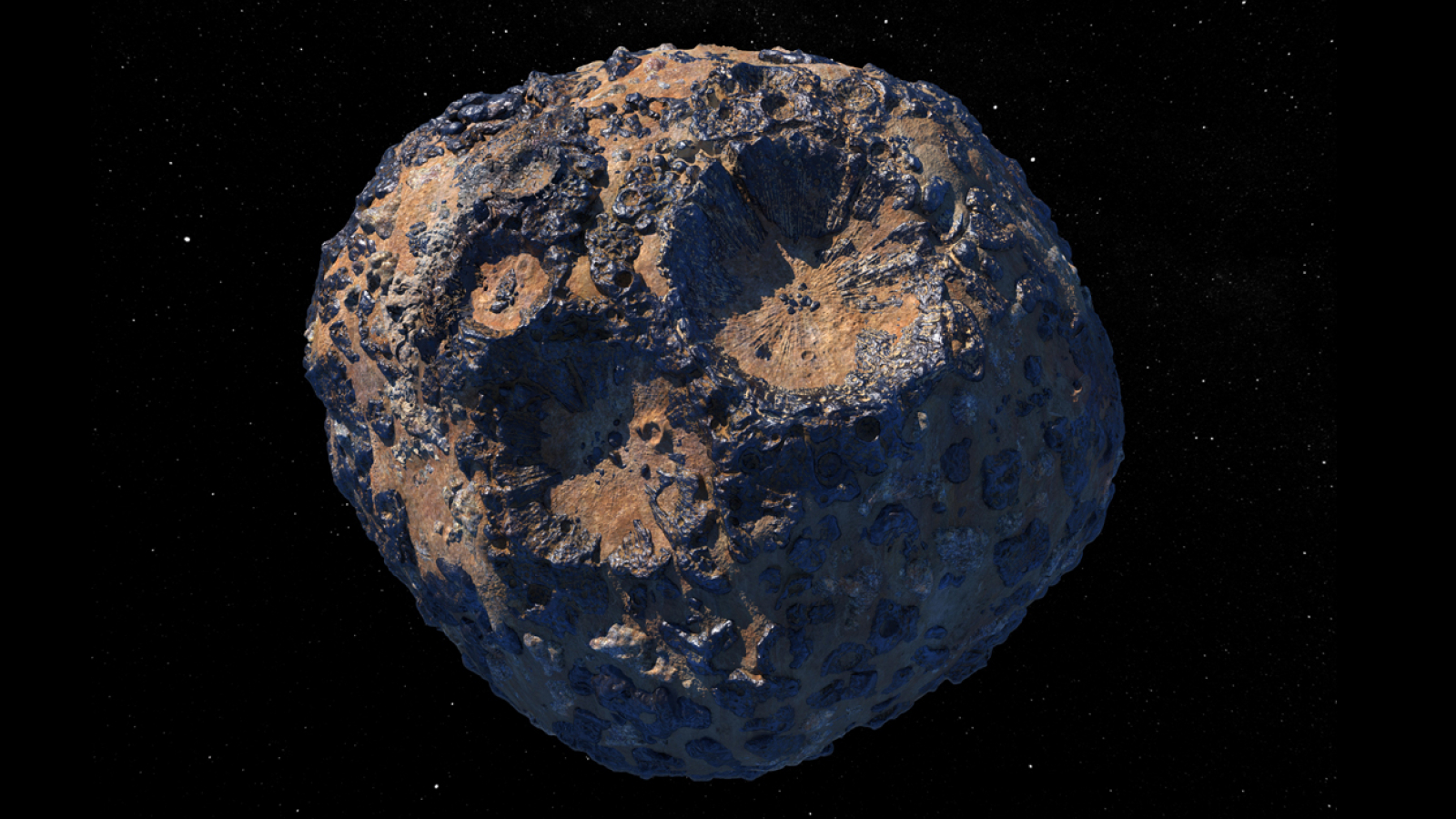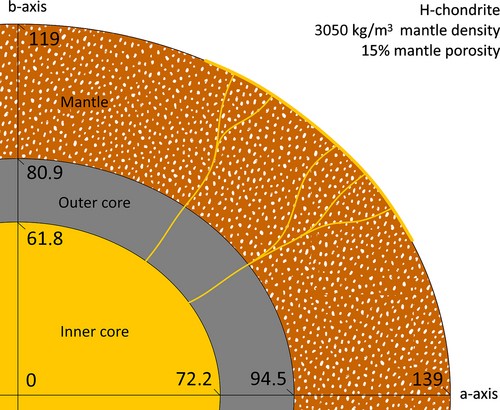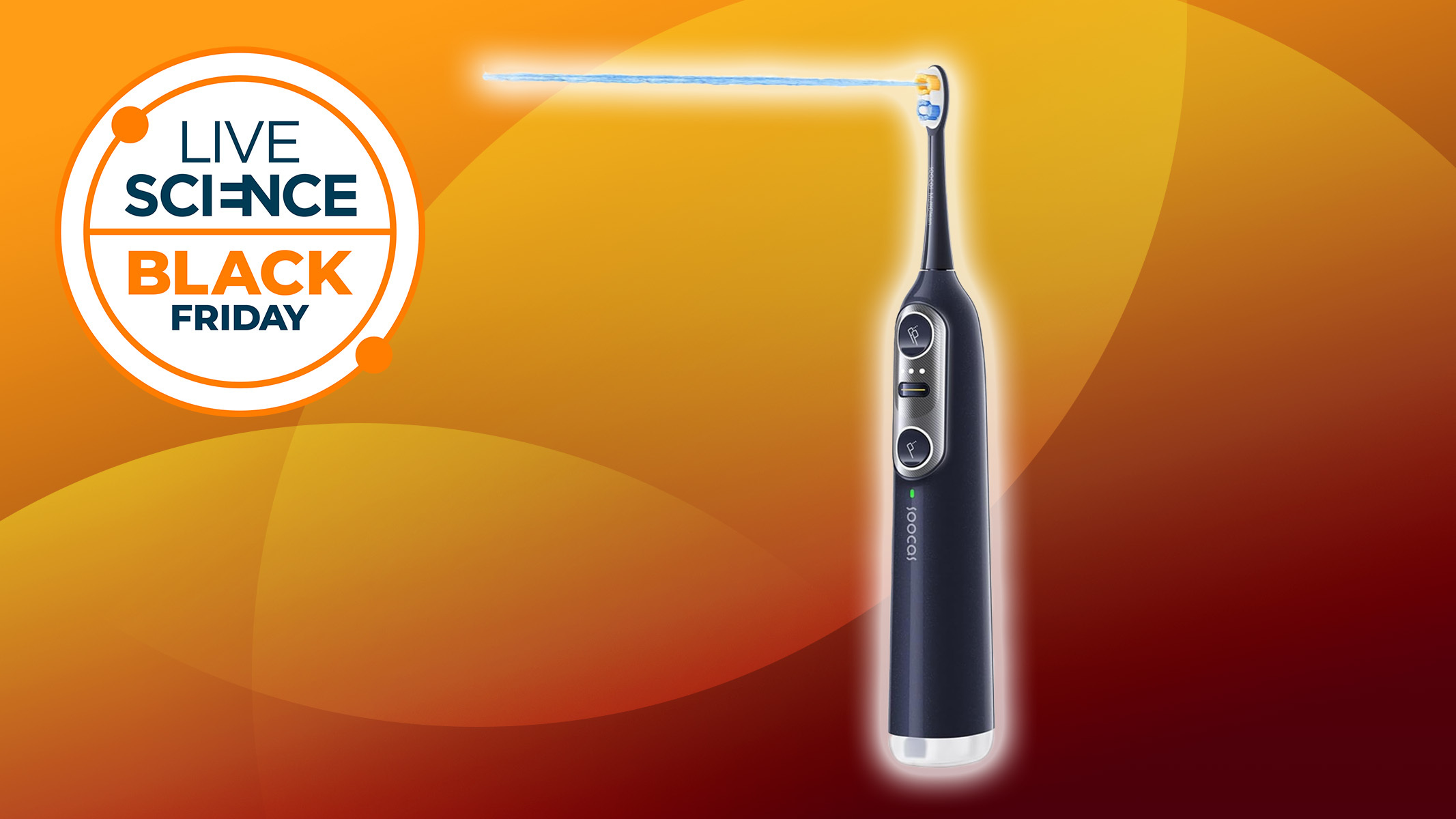$100,000 quadrillion asteroid Psyche may be the product of metal volcanoes, study hints
The metal-coated asteroid Psyche may have had eruptions of molten iron and nickel on its surface. This situation was more likely if the space rock is made of the same chemicals as metal-rich meteorites, a new study suggests.

The asteroid Psyche may have once had vents that spewed molten metal — but only if it is chemically similar to rare, metal-rich meteorites, a new study suggests. The study, which was published online July 31 in the Journal of Geophysical Research: Planets, could explain why the space rock has an unusual metallic cloak.
Potato-shaped asteroid Psyche, a member of the main asteroid belt between Mars and Jupiter, is unique in being super-shiny. Radar measurements indicate that, on average, its surface reflects nearly a third of the sunlight shining on it, making it at least twice as reflective as most asteroids.
Because of its reflectivity, scientists have posited that Psyche isn’t just mostly metal but may actually be the exposed iron-rich heart of a planetary building block. Samuel Courville, a planetary scientist at Arizona State University, described Psyche to Live Science in an email as "a relic from the dawn of the solar system." Some have estimated the value of its metals to be a staggering $100,000 quadrillion.
However, this shininess may be mostly skin-deep. In 2020, calculations involving updated estimates of Psyche’s mass and volume suggested that the asteroid’s density wasbetween 231 lbs per cubic foot (3,700 kilograms per cubic meter) and 256 lbs/cubic foot (4,100 kg/cubic meter). While denser than most asteroids, it’s only about half the density expected if Psyche were made entirely of iron and nickel. This, along with surface heat emission data, indicated that while Psyche's bulk is largely non-metallic, the asteroid probably possesses a metal-rich cloak.
Scientists still aren’t sure how Psyche acquired this coat. Although many phenomena could be responsible, the most favored at present is ferrovolcanism. "Ferrovolcanism is like normal volcanism except instead of molten rock, the 'lava' is molten metal," Courville, who wasn’t involved in the new study, said.

First suggested in 2019, the idea is that during Psyche’s infancy, its metallic core solidified from outside in, with the molten inner core becoming progressively richer in lighter elements. The difference in density between the core's solid exterior and molten interior would have created enough pressure for the latter to pierce into the overlying mantle and the asteroid’s surface, creating vents that spewed molten metal.
But ferrovolcanism can only work with specific chemical compositions, since it greatly depends on how much pressure builds up in the inner core. Data from meteorites — space rocks that fall on Earth’s surface — help constrain the range of these chemical combinations.
Get the world’s most fascinating discoveries delivered straight to your inbox.
To determine the chemistry that could have spawned Psyche’s iron-spewing vents, the authors of the new study — Jaap Jorritsma, a Ph.D. student at Delft University of Technology and Win van Westrenen, a professor of earth sciences at Vrije University in Amsterdam — created computer models of the asteroid.
They considered the asteroid to have a chemical makeup similar to one of three types of meteorites: EH-chondrites (rare, stony meteorites lacking iron), H-chondrites (commonplace, stony meteorites with moderate amounts of iron) and mesosiderites (rare, iron-rich meteorites). The researchers then ran simulations to figure out which chemical composition was most favorable for ferrovolcanism to occur.
The researchers found that Psyche’s bulk must be rich in metals like iron, as low iron content would lead to tiny cores in which the internal pressure generated is insufficient to push out magma. This meant that Psyche was most likely to have had ferrovolcanism if it contained large amounts of mesosiderite. H-chondrites could lead to the spewing of molten metal too, but only if they had a relatively high density. In contrast, EH-chondrites only produced tiny cores that lacked iron-rich exteriors, making them unlikely to constitute part of Psyche.
The researchers expect NASA’s ongoing Psyche mission will provide evidence supporting their findings. Scheduled to arrive at Psyche by July 2029, the spacecraft will spend two years photographing the asteroid and collecting spectroscopic data. Courville said that these snapshots will reveal if surface metal is in large outcrops or flows, which would indicate that ferrovolcanism had occurred in the space rock's past.

Deepa Jain is a freelance science writer from Bengaluru, India. Her educational background consists of a master's degree in biology from the Indian Institute of Science, Bengaluru, and an almost-completed bachelor's degree in archaeology from the University of Leicester, UK. She enjoys writing about astronomy, the natural world and archaeology.
You must confirm your public display name before commenting
Please logout and then login again, you will then be prompted to enter your display name.
